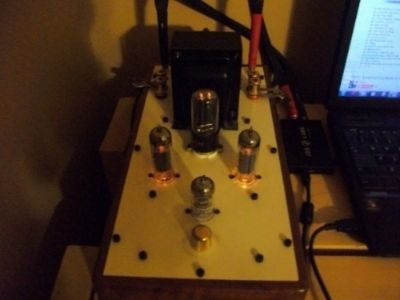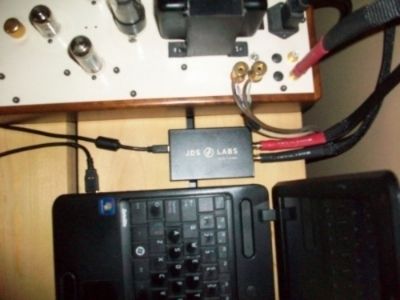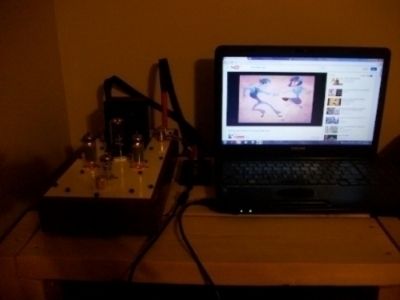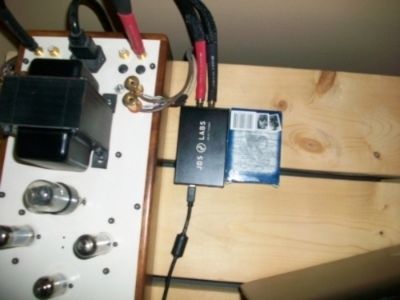Ah, that explains where I was confused. The musical boxes are used everywhere EXCEPT monitoring 🙂
Love their stuff.
I have a fondness for the larger ATC monitors ever since I heard the SCM50 back in about 1990. Couldn't afford them then, can't now. Nearly got a pair of SCM10 for my first flat. One day maybe...
Once you get past the whimsy (I don't mean that negatively) of blue grass rock covers you'll find that their cds are of exceptional sound quality.
I think that has something to do with the fact that their singer/guitarist/fiddle player John Wheeler aka Scotch Barleycorn was also part-owner and engineer of the studio they recorded in.
He now seems to reside on Englands sunny shores a lot and releases stuff under his own name.
Here is a linky to Johns version of Eton Rifles:
https://www.youtube.com/watch?v=oMnI5JoMNs0
ATC seems to be a fondness we share! ;-)
But that doesn't stop me from trying to build similar quality for less money.
I've got some ideas...
That youtube link was worth it for the comments section. Youtube commentards never fail to amuse. A fine cover version as well. He can do a pretty good costello impression.
… software ...
When i say software i am talking about the CDs, DVDs, downloads, LPs that we typically listen to.
The 'musical performance' of most studio recordings is an artificial product
Yes. Artificial only in that it is not a sampling of a live performance.
dave
So you do acknowledge that sound imaging is measurable.
Not using any commonly presented measurements.
Everything is measurable, but we all to often either do not measure that or do not yet know how. Now if what we are trying to measure is chaotic the measure may not be meaningful in any useful way.
dave
Edit: After several attempts, re-sizing etc I can't get any pics to show. DIY has got to be about the worst place to post pics, grr! Kijiji no problem, here not so much lol..
You have to use the URL of the actual picture for the picture to show up on the forum. The URLs you use pint to web pages, not pictures (BTW, not so good pictures (as you said), no one will miss them). In your case best to just attach them to your post.
dave
When i say software i am talking about the CDs, DVDs, downloads, LPs that we typically listen to.
Yes. Artificial only in that it is not a sampling of a live performance.
dave
Re: Software
Fair enough, a misunderstanding.
For the rest: Exactly, so if you respect the artists decisions you should listen to the product the way they heard it: Using studio monitors with oodles of clean power in a well treated room rather than adding your own euphonics.
At least if you want to stay on the good side of High Fidelity because otherwise you are merely creating a lofi stereo that happens to tickle your personal aural tastebuds.
Not that there is anything wrong with that per sé, just don't call it hifi.
😱 Wow, that's a quite a turn around from this!Not using any commonly presented measurements.
Everything is measurable, but we all to often either do not measure that or do not yet know how. Now if what we are trying to measure is chaotic the measure may not be meaningful in any useful way.
dave
Lots. For instance show me a measure that shows how well a DUT is doing 40-50 dB down in the presence of 0 dB (and not with a sin wave). How about a measure that shows how well a system images (or even a test that says anything about imaging).What sound people can hear that cannot be measured with the current audio measuring technology?
Charles - regarding "respecting the artists decisions" - if you're talking about the performers, rather than the recording engineers - how often to the former get to have final voice in the end result of the mixing / sweetening process?
Even then, unless they record and mix their entire career output a single studio facility that never updates any equipment / mixing tools , etc how often will what they hear have exactly the same "signature" for each session?
Even then, unless they record and mix their entire career output a single studio facility that never updates any equipment / mixing tools , etc how often will what they hear have exactly the same "signature" for each session?
Please refrain from these ad hominem attempts; eristic may help winning a debate, but will not help in finding the truth. 😉
Quite common, but hard to justify. Is there really justificaton for this strategy to find in epistemology or theory of science?
I probably should have phrased it differently, and apologize for the overly-antagonistic tone that you and Ben caught. We all come to the table with some baggage that needs a bit of disclosure, which biases us heavily.
Didn't mean to drag it in a new direction, let's just say that Dave and I have different stances on audibility (as evidenced by his polite words in response), which lends him towards more taking subjective liberties than I'm willing to take.
You have to use the URL of the actual picture for the picture to show up on the forum. The URLs you use pint to web pages, not pictures (BTW, not so good pictures (as you said), no one will miss them). In your case best to just attach them to your post.
dave
I used the insert image icon, uploaded to photo bucket and re-sized cause you have too here etc. The only reason I ever started a PhotoBUcket account way back when is because of DIY. A person should just be able to take a pic with their camera, download it to their computer and upload to DIY. KISS principle, without all the extra editing re-sizing and unknowns etc. Works for Kijiji . Computer geeks should try and make it easier for non geeks etc. The Kijiji site would have failed long ago if it was the same as DIY for uploading pics or adding them to messages.. Anyhow the ODAC is worth the money and the pics were okay, just not HD etc.
😱 Wow, that's a quite a turn around from this!
Not at all. We currently do not get measures that tell the whole story or in many cases provide any useful information about the sonics (ie THD).
You clearly have problems understanding what you are reading.
dave
Not at all. We currently do not get measures that tell the whole story or in many cases provide any useful information about the sonics (ie THD).
You clearly have problems understanding what you are reading.
dave
I think the fact that lossy compression works so well quite reinforces the fact that we do know about what equates to good sonics. Where the compression algorithms are basically throwing away all the data concerned with things that we cannot hear. I don't think anyone can spot the difference between high enough bit rate lossy codecs and the original.
Charles - regarding "respecting the artists decisions" - if you're talking about the performers, rather than the recording engineers - how often to the former get to have final voice in the end result of the mixing / sweetening process?
Even then, unless they record and mix their entire career output a single studio facility that never updates any equipment / mixing tools , etc how often will what they hear have exactly the same "signature" for each session?
The recording engineer typically has little to no input into what gets released.
That is between the artist, manager, producer and the record company.
(Many cooks spoil the broth btw.)
If recording engineers had any influence the Loudness Wars would have never happened, they've been complaining about that longer than anybody.
Here is a nice write up on recording Start Me Up by the Stones off their Tattoo You album:
CLASSIC TRACKS: 'Start Me Up'
Recorded all over the place over years, re-recorded in a warehouse and mixed by different people in 3 different studios.
Okay lets see if this works? lol Here's the ODAC RevB from JDS Labs. It would probably compare favorably to some of the more expensive USB only Dac's I'd be comfortable to say 🙂




This last pic shows the ODAC compared to a deck of cards in their box.. Pretty amazing tech for something so teeny.




This last pic shows the ODAC compared to a deck of cards in their box.. Pretty amazing tech for something so teeny.
Last edited:
The whole story of what?Not at all. We currently do not get measures that tell the whole story
That's your personal claim. As far as the supporting evidence goes...or in many cases provide any useful information about the sonics (ie THD).

That would be the case if you listed "Lots" of sound people can hear but cannot be measured. So far, the list shows zero. 🙁You clearly have problems understanding what you are reading.
T
That's your personal claim. As far as the supporting evidence goes...
And where is your evidence that we can measure tells us how good things sound?
Where are the solid DBT?
dave
No lossy compression here…
dave
I don't even use compression here, but that was blatantly not the point.
If we can design compression codecs, that with an appreciable bit rate, can chuck away the vast majority of the sound based entirely on the principle of 'we cannot hear it' then that says fairly confidently that we do know what we can and cannot hear.
I choose to use wave files because I have the space and it appeals to my 'audiophile/phool' side. mp3 you must be joking!🙄. I would losslessly encode all of it if I could be bothered, but I can't. mp3 just leaves a bad taste in my mouth and I don't want to be 'potentially' missing out on anything, even if science says I cannot hear it, or even if I prove to myself that I cannot hear it.
If we can design compression codecs, that with an appreciable bit rate, can chuck away the vast majority of the sound based entirely on the principle of 'we cannot hear it' then that says fairly confidently that we do know what we can and cannot hear.
You can believe that if you want, and with many a lo-fi or medium-fi systems it may be true... remember "perfect sound forever"?
You know what they say "friends don't let friends listen to MP3".
dave
The world best dac is a tda1541.
But now the 192khz sounds so good the vinyl is getting obsolete. IMO the best dac is using discrete components, not opamps.
But now the 192khz sounds so good the vinyl is getting obsolete. IMO the best dac is using discrete components, not opamps.
- Home
- Member Areas
- The Lounge
- World's Best DAC's